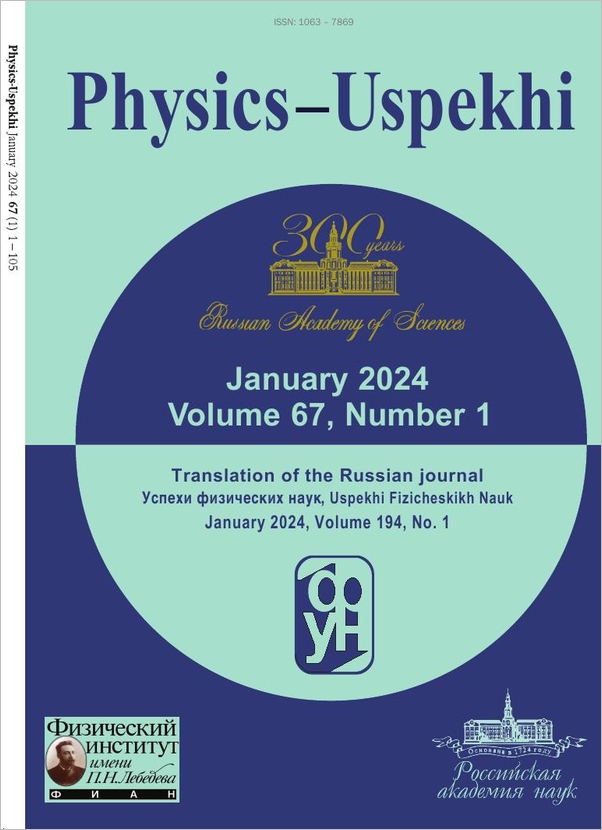|
This article is cited in 26 scientific papers (total in 26 papers)
REVIEWS OF TOPICAL PROBLEMS
Nonlinear dynamics of zigzag molecular chains
A. V. Savina, L. I. Manevichb, P. L. Christiansenc, A. V. Zolotaryukd
a Institute for Physico-Technical Problems, Moscow
b N. N. Semenov Institute of Chemical Physics, Russian Academy of Sciences, Moscow
c Derartment of Mathematical Modelling, Technical University of Denmark, Lyngby
d N. N. Bogolyubov Institute for Theoretical Physics, National Academy of Sciences of Ukraine
Abstract:
Nonlinear, collective, soliton type excitations in zigzag molecular chains are analyzed. It is shown that the non-linear dynamics of a chain dramatically changes in passing from the one-dimensional linear chain to the more realistic planar zigzag model — due, in particular, to the geometry-dependent anharmonism that comes into the picture. The existence or otherwise of solitons is determined in this case by the interplay between the geometrical anharmonism and the physical anharmonism of the interstitial interaction, of opposite signs. The nonlinear dynamic analysis of the three most typical zigzag models (two-dimensional alpha-spiral, polyethylene transzigzag backbone, and the zigzag chain of hydrogen bonds) shows that the zigzag structure essentially limits the soliton dynamics to finite, relatively narrow, supersonic soliton velocity intervals and may also result in that several acoustic soliton types (such as extension and compression varieties) develop simultaneously in the chain. Accordingly, the inclusion of chain geometry is necessary if physical phenomena are to be described in terms of solitary waves.
Received: June 4, 1998
Citation:
A. V. Savin, L. I. Manevich, P. L. Christiansen, A. V. Zolotaryuk, “Nonlinear dynamics of zigzag molecular chains”, UFN, 169:3 (1999), 255–270; Phys. Usp., 42:3 (1999), 245–260
Linking options:
https://www.mathnet.ru/eng/ufn1576 https://www.mathnet.ru/eng/ufn/v169/i3/p255
|


| Statistics & downloads: |
| Abstract page: | 285 | | Full-text PDF : | 92 | | References: | 50 | | First page: | 1 |
|



 Contact us:
Contact us: Terms of Use
Terms of Use
 Registration to the website
Registration to the website Logotypes
Logotypes